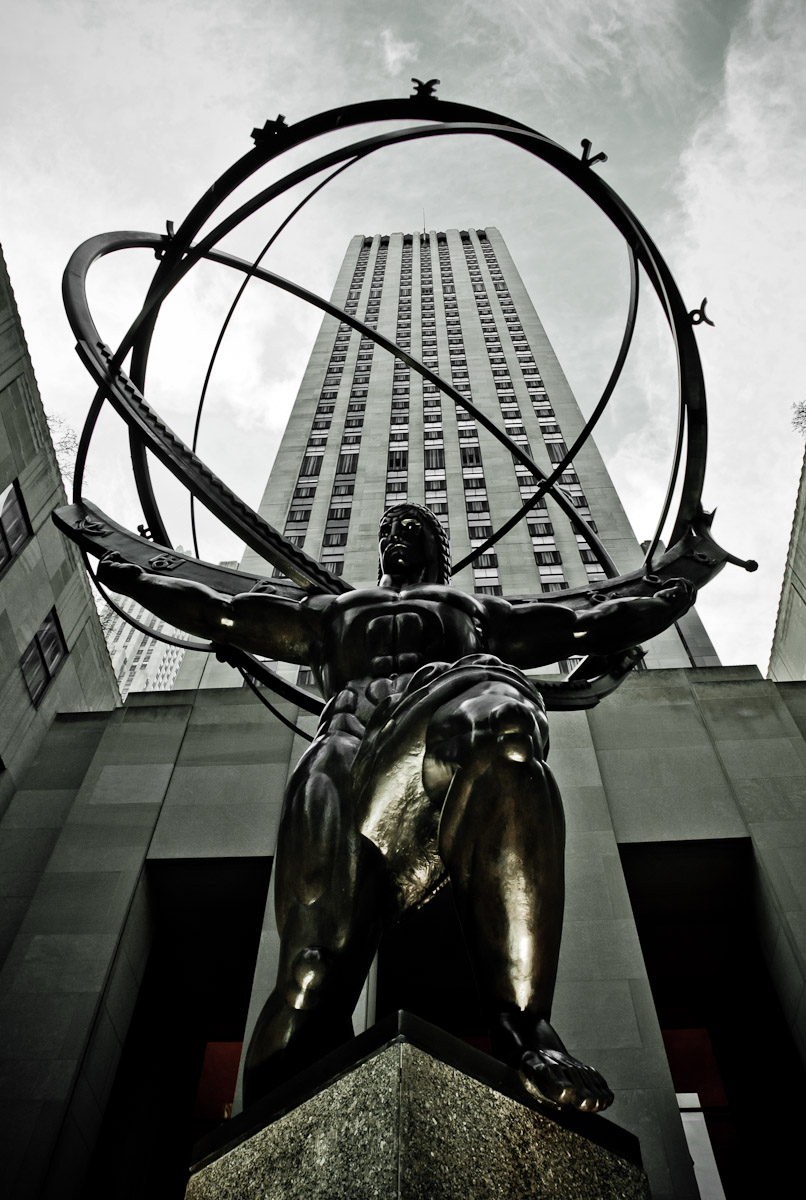Atlas Shrugged
Philosophy
Politics/Social Commentary
May, 2013
I am no literary critic, but I see the difference between a utopia and a dystopia as this: a dystopia generally takes a particular feature of the actual world which the author finds ominous and extrapolates it into the future, predicting just what society might look like should that feature be allowed to continue its present course. Fahrenheit 451 is about censorship and the freedom of ideas, the film Equilibrium is about the desire to rid humanity of the emotional (and therefore the uncontrollable) side of human nature, and 1984 was about the dangers of totalitarianism. On the other hand, a utopia attempts to build a perfect world, however that might be defined. While reading Atlas Shrugged by Ayn Rand over the course of the last few months, I originally had it pinned to the dystopia column. After all, at first blush it seems to fall exactly into my definition: Rand takes the notion of government intervention into economic affairs and imagines a world where it is taken to an extreme. Then, the intellectual and business giants, those who move the world and support it on their shoulders, decide to go on strike. They disappear, and the world crumbles.

Atlas Shrugged by Ayn Rand
But after giving it some thought, I decided I had it exactly backwards. Atlas Shrugged is not a dystopia, it's a utopia through and through. But I must qualify this: I do not mean it they way Rand means it in her chapter "The Utopia of Greed", the hidden valley to which all the Atlases of the world have vanished and live in a society freed from government. Instead, Atlas Shrugged is a utopia in the sense that the world which Rand imagines is already perfect, even before the crash. This is because the world she built functions perfectly. The only thing which stands between a person and wealth is hard work, and hard work is the only thing which produces wealth. Any hindrance of the free market, no matter how well-intentioned or well planned, only makes things worse. When the leading engineers, intellectuals, and business managers stop working, the world really does crash, and they are the only force capable of saving it.
But the simple fact is the world Rand imagined is not this world. Our world doesn't work like hers, not because we don't have her values or because the takers have control over the makers, but because there is no one engine of history, no one group of people or nation or class or factor which drives civilization or moves the world. To make the classic academic move: "It's more complicated than that."

"Atlas", located at Rockefeller Center, 1937
Pictured above is "Atlas", a statue at the Rockefeller Center in New York. Pictured below is the plaster mold used by Jean-Baptiste Carpeaux around 1872 to construct the center piece to the Fontaine de l'Observatoire in Paris. The mold is at the Musée d'Orsay. The differences are interesting to me. In the Carpeaux piece, each woman represents a part of the world: America, Asia, Africa, and Europe. The figures are in motion, each in the middle of a turn, the universe spinning above them, powered by their dance. There is a shackle around Africa's ankle, and the chain attached to it is being broken by America's foot. In "Atlas", a single man holds up the heavens It has been associated with Rand's novel since publication, even though the statue predates the work by two decades. Standing four stories high in front of Rockefeller Center, this connection speaks for itself.

Carpeaux's "The Four Parts of the World Supporting the Celestial Sphere"
at the Musée d'Orsay in Paris, 1872.
The Carpeaux sculpture tells a story; there is a history and movement there. "Atlas" simply is—one motion, one man, forever the same. The chain around Africa's foot may be broken, but the shackle is still there. Europe's hands barely touch the globe; she is free, and her pose suggests almost a self-glorification. This history, this story which the sculpture is expressing, has a weight.Where does systemic poverty fit into Rand's universe? What about our country's history of racism? As the industrial movement expanded in England, rural, sustenance farmers had to be forced off their land and into the cities to work at the textile factories. They were getting by just fine and had no reason to leave their farms, so the industrialists used their connections in parliament to take their land away. In the end, they had no choice but to sell the only thing they had left, their bodies. This story could be multiplied the world over. Capitalism didn't spread by the triumph of reason or freedom; it was spread by force, and still is today. Where does that fit into Rand's world? Or the single mother who works two jobs to try and give her kids a better life than she had, but whose children still end up impoverished because schools are funded by property taxes, and wealthy families "don't want to pay to educate somebody's else's child."
Part three of the novel is called "A is A". Rand implies that people are refusing to see the world as it really is (the reader's guide at the end about "Objectivism", Rand's "philosophy", clarifies this). But I think it's Rand who is guilty of ignoring reality. The world she paints is an interesting one, one where all relationships are economic relationships, where everybody treats everyone as a means to an end, but simultaneously asks no one else to help bear their responsibility. If you work, if you produce, then you are rewarded in full. If you take something you didn't earn, the world collapses around you. It's a provocative place to set a novel, but it is still fantasy. The world is propelled by the dance and struggle of millions and millions of people, not by the strength of giants.